CVTE
Design and Visual Communications
Beverly Rebelo, Academy B Administrator – Ext. 632
Course & Program of Studies
Statement of Purpose
The Design and Visual Communication program provides a comprehensive education in the principles and practices of visual communication. This program is designed to equip students with the skills and knowledge needed to succeed in the dynamic field of design.
Key Areas of Focus:
- Graphic Design:
- Typography
- Color Theory
- Layout and Composition
- Print Design
- Digital Design
- Web Design and Development:
- HTML, CSS, and JavaScript
- User Experience (UX) Design
- User Interface (UI) Design
- Responsive Web Design
- Digital Illustration:
- Vector and raster graphics
- Digital painting and illustration techniques
- Motion Graphics and Animation:
- Principles of animation
- Motion graphics software (e.g., Adobe After Effects)
- Video editing and post-production
- Branding and Identity:
- Brand development and strategy
- Logo design
- Brand guidelines
- Visual Communication Theory:
- Design history and theory
- Semiotics and visual culture
- Critical thinking and problem-solving
Skills and Competencies:
- Creative Thinking: Generating innovative ideas and solutions.
- Problem-Solving: Identifying and resolving design challenges.
- Technical Proficiency: Mastering design software and tools.
- Communication Skills: Effectively communicating design concepts and ideas.
- Project Management: Managing time, resources, and deadlines.
- Professionalism: Adhering to industry standards and ethical practices.
By the end of the program, students will have a strong portfolio showcasing their skills and creativity. They will be prepared to pursue careers in various design fields.
Exploratory Program
The Freshman Design and Visual Communication program provides a broad introduction to the world of design. This exploratory course aims to spark students’ creativity and interest in various design disciplines. Key areas of exploration include:
Traditional Design:
- Drawing and Illustration: Developing basic drawing skills and techniques.
- Painting: Experimenting with different painting techniques and mediums.
Digital Design:
- Graphic Design: Creating digital graphics using design software (e.g., Adobe Photoshop, Illustrator).
- Web Design: Learning the basics of HTML and CSS for creating simple websites.
- 3D Modeling and Animation: Exploring 3D modeling and animation software (e.g., Blender, LightWave).
- Video Editing: Editing video clips using video editing software (e.g., Adobe Premiere Pro).
Design Principles:
- Color Theory: Understanding color theory and its application in design.
- Typography: Learning about typography and its impact on visual communication.
- Composition: Understanding the principles of composition and layout.
- User Experience (UX) Design: Considering the user experience in design projects.
By the end of the program, students will have a solid foundation in design principles and techniques. They will be able to:
- Use design software effectively.
- Create visually appealing designs.
- Communicate ideas visually.
- Problem-solve and think critically.
This exploratory program will help students discover their passions and interests within the field of design and communication, and guide them towards more specialized courses in their subsequent years.
Freshman Program
The DV program at GNBRVTHS offers a comprehensive curriculum in the field of visual communication, providing students with the skills and knowledge needed to succeed in various creative careers.
Key Areas of Focus:
- Graphic Design:
- Logo design
- Branding
- Print design (brochures, flyers, posters)
- Packaging design
- Digital Design:
- Web design and development (HTML, CSS, JavaScript)
- User interface (UI) and user experience (UX) design
- Digital illustration
- Digital photography
- Animation:
- 2D and 3D animation
- Motion graphics
- Video editing
- Photography:
- Digital photography techniques
- Photo editing and retouching
- Portrait, landscape, and product photography
Skills and Techniques:
- Adobe Creative Suite: Proficiency in Adobe Photoshop, Illustrator, InDesign, Premiere Pro, and After Effects.
- Design Principles: Understanding the principles of design, including color theory, typography, layout, and composition.
- Problem-Solving and Critical Thinking: Analyzing design problems and developing creative solutions.
- Project Management: Managing time, resources, and deadlines.
- Communication Skills: Effectively communicating design ideas and collaborating with clients.
Through a combination of theoretical instruction and hands-on projects, students will develop a strong portfolio showcasing their skills and creativity. The program prepares students for careers in graphic design, web design, animation, photography, and other related fields.
Sophomore Program
The Sophomore Design and Visual Communications program builds upon the foundational skills developed in the freshman year. Key areas of focus include:
Digital Design:
- Adobe Creative Suite: Advanced proficiency in Photoshop, Illustrator, and InDesign.
- Digital Illustration: Creating digital illustrations using various techniques and styles.
- Vector Graphics: Designing logos, icons, and other vector-based graphics.
- Raster Graphics: Editing and manipulating digital photographs.
Web Design and Development:
- HTML, CSS, and JavaScript: Building interactive websites and web applications.
- Responsive Web Design: Creating websites that adapt to different screen sizes.
- User Experience (UX) Design: Designing user-friendly and intuitive interfaces.
Animation and Motion Graphics:
- 2D Animation: Creating animated sequences using frame-by-frame animation techniques.
- 3D Animation: Modeling, rigging, animating, and rendering 3D characters and scenes.
- Motion Graphics: Creating dynamic visual effects and animations.
Photography:
- Digital Photography Techniques: Understanding exposure, aperture, shutter speed, and ISO.
- Photo Editing: Using Photoshop to edit and enhance digital photographs.
- Photography Styles: Exploring different photography styles, such as portrait, landscape, and product photography.
Visual Communication Theory:
- Color Theory: Applying color theory to create visually appealing designs.
- Typography: Understanding the principles of typography and using fonts effectively.
- Layout and Composition: Creating balanced and visually appealing layouts.
By the end of the sophomore year, students will have a strong foundation in design principles and techniques. They will be able to create professional-quality designs and animations, and be well-prepared to pursue advanced studies or careers in the creative industry.
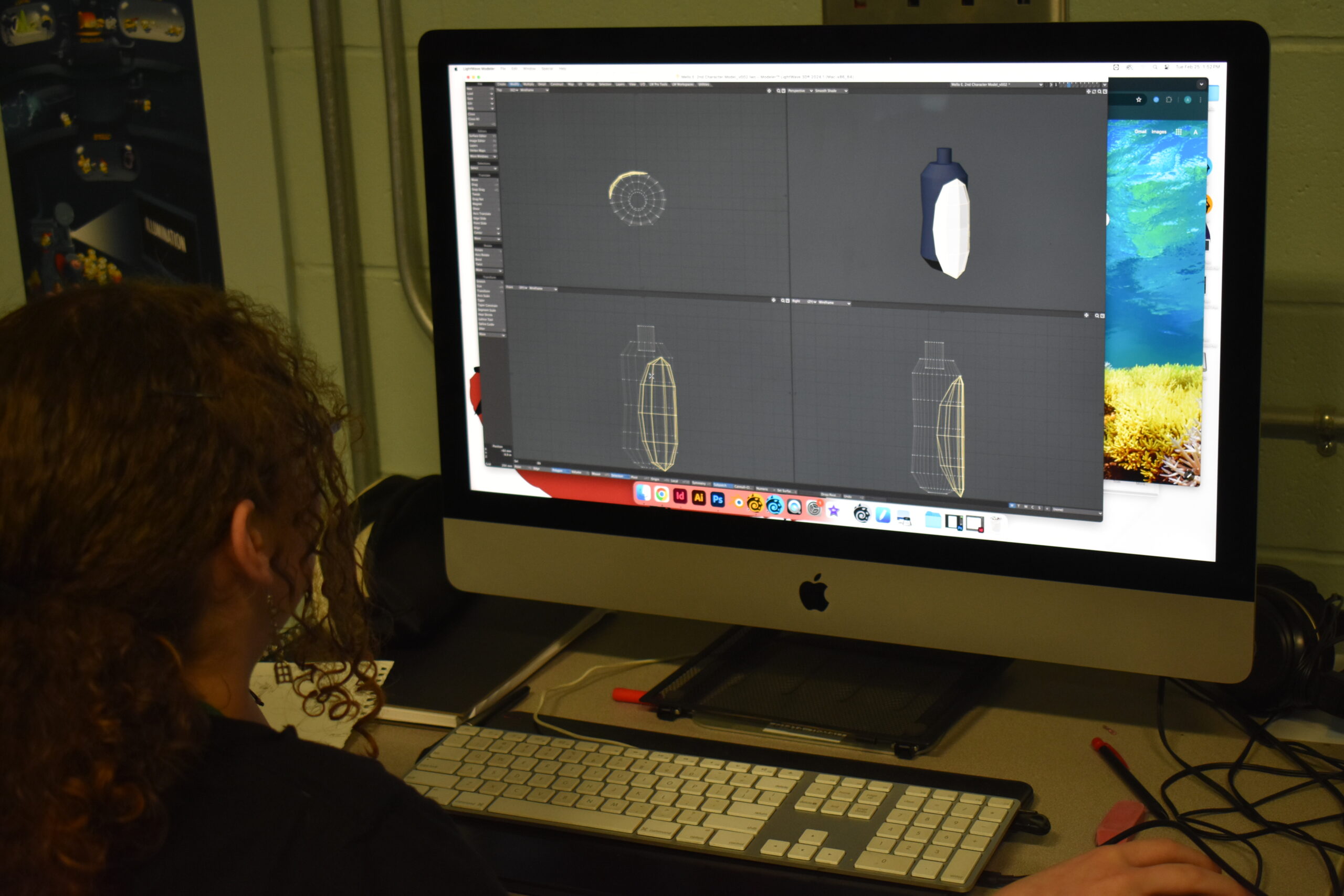
Sophomore Related Class 1
Media Writing I
Media Writing I is designed to introduce students to the fundamentals of scriptwriting and pre-production techniques. This course will equip students with the essential skills to develop compelling narratives and visual concepts for various media projects.
Key Topics:
- Scriptwriting:
- Writing for different media (film, television, video games, etc.)
- Character development and dialogue
- Plot structure and pacing
- Screenwriting formats and conventions
- Storyboarding:
- Visualizing scripts through storyboards
- Creating clear and concise storyboards
- Using storyboards to plan and organize projects
- Graphic Design and Illustration:
- Using Adobe Photoshop for graphic design and illustration
- Creating concept art and visual development
- Designing logos, posters, and other marketing materials
Career Readiness:
- Career Cruising: Exploring career paths in the media industry.
- Identifying potential job opportunities
- Developing career goals and strategies
- OSHA Training: Understanding workplace safety and health regulations.
- Recognizing potential hazards and risks
- Implementing safety protocols
By the end of this course, students will be able to:
- Write effective scripts for various media.
- Create visually appealing storyboards.
- Use Adobe Photoshop for graphic design and illustration.
- Develop a strong foundation in pre-production skills.
- Understand career opportunities in the media industry.
- Practice safe work habits.
Sophomore Related Class 2
Media Skills
Media Skills is a course designed to equip students with the essential tools and techniques for creating effective visual communication. This course focuses on developing skills in graphic design, digital art, and publishing.
Key Areas of Focus:
- Graphic Design:
- Understanding design principles (color theory, typography, layout)
- Creating logos, brochures, flyers, and other marketing materials
- Using design software (Adobe Photoshop, Illustrator, InDesign)
- Digital Art:
- Digital painting and illustration techniques
- Using drawing tablets and digital art software
- Creating concept art and storyboards
- Publishing:
- Preparing digital and print publications
- Understanding print production processes
- Creating interactive digital publications (e.g., e-books, online magazines)
By the end of this course, students will be able to:
- Use design software proficiently
- Create visually appealing and effective designs
- Understand the principles of design and layout
- Prepare digital and print publications
- Collaborate with others on design projects
This course provides a solid foundation in design skills, preparing students for careers in graphic design, web design, animation, and other creative fields.
Design & Visual Communication Junior and Senior Programs
In their junior year, students in the Design and Visual Communications program will delve deeper into specialized areas of multimedia and advertising design.
Multimedia Communications:
- Video Production:
- Scriptwriting and storyboarding
- Camera operation and lighting techniques
- Video editing using Adobe Premiere Pro
- Web Design and Development:
- HTML, CSS, and JavaScript
- Website design and development
- User experience (UX) and user interface (UI) design
- Content management systems (CMS)
- Social Media Marketing:
- Social media strategies and analytics
- Content creation for social media platforms
- Influencer marketing
- Digital Photography:
- Digital camera techniques
- Photo editing and retouching
- Photography for web and print
Advertising and Design:
- Graphic Design:
- Advanced graphic design techniques
- Branding and identity design
- Print design (brochures, flyers, posters)
- Illustration:
- Digital illustration techniques
- Concept art and character design
- Typography:
- Typography principles and best practices
- Type design and customization
- Art Direction:
- Art direction for print and digital media
- Creative problem-solving and concept development
In their senior year, students will refine their skills and apply them to real-world projects. They will also focus on portfolio development, job readiness, and industry trends.
Multimedia Communications:
- Advanced Video Production:
- Documentary filmmaking
- Music video production
- Motion graphics and animation
- Web Development:
- Web application development
- Digital Marketing:
- Search engine optimization (SEO)
Advertising and Design:
- Advanced Graphic Design:
- Packaging design
- Environmental design
- User interface (UI) design
- Freelance and Entrepreneurship:
- Building a freelance business
- Marketing and networking
- Financial management for creative professionals
- Portfolio Development:
- Curating a strong portfolio
- Preparing for job interviews and industry networking
By the end of their senior year, students will be well-prepared to enter the workforce or pursue further education in design, media, or related fields. They will have a strong foundation in design principles, technical skills, and professional practices.
Junior Program (MC)
This course provides a comprehensive overview of video production and web design, equipping students with the skills and knowledge needed to succeed in the digital media industry.
Key Areas of Focus:
Video Production:
- Pre-production:
- Scriptwriting and storyboarding
- Pre-production planning and scheduling
- Budgeting and resource allocation
- Production:
- Camera operation and techniques
- Lighting and sound recording
- Directing and managing a production crew
- Post-production:
- Video editing using software like Adobe Premiere Pro
- Color correction and grading
- Sound editing and mixing
- Adding visual effects and motion graphics
- Ethical Considerations:
- Copyright laws and intellectual property
- Fair use and creative commons
- Ethical guidelines for video production
Web Design:
- Web Design Fundamentals:
- HTML, CSS, and JavaScript
- Responsive web design
- User experience (UX) and user interface (UI) design
- Content Management Systems (CMS):
- WordPress
- Creating and managing website content
- SEO and web analytics
- Web Development:
- Front-end and back-end development
- Database integration
By the end of this course, students will be able to:
- Create professional-quality videos for various purposes.
- Develop and maintain websites.
- Understand the technical and creative aspects of video production and web design.
- Apply ethical and legal considerations in their work.
- Collaborate effectively with team members.
This course prepares students for careers in video production, web design, digital marketing, and other related fields.
Junior Program (A&D)
The Design and Visual Communication curriculum provides a strong foundation in the principles and practices of visual communication. By combining theoretical knowledge with hands-on experience, students will develop the skills and knowledge needed to succeed in the creative industry.
Key Areas of Focus:
- Graphic Design:
- Typography
- Color Theory
- Layout and Composition
- Print Design (brochures, flyers, posters)
- Digital Design (web graphics, social media graphics)
- Web Design and Development:
- HTML, CSS, and JavaScript
- User Experience (UX) Design
- User Interface (UI) Design
- Responsive Web Design
- Digital Illustration:
- Vector and Raster Graphics
- Digital Painting and Illustration Techniques
- Motion Graphics and Animation:
- Principles of Animation
- Motion Graphics Software (e.g., Adobe After Effects)
- Video Editing and Post-Production
- Branding and Identity:
- Brand Development and Strategy
- Logo Design
- Brand Guidelines
Skills and Competencies:
- Creative Thinking: Generating innovative ideas and solutions.
- Problem-Solving: Identifying and resolving design challenges.
- Technical Proficiency: Mastering design software and tools.
- Communication Skills: Effectively communicating design concepts and ideas.
- Project Management: Managing time, resources, and deadlines.
- Professionalism: Adhering to industry standards and ethical practices.
By the end of the program, students will be well-prepared to pursue careers in various design fields, including graphic design, web design, animation, and user experience design. They will have a strong portfolio showcasing their skills and creativity, and be able to effectively communicate their design ideas to clients and colleagues.
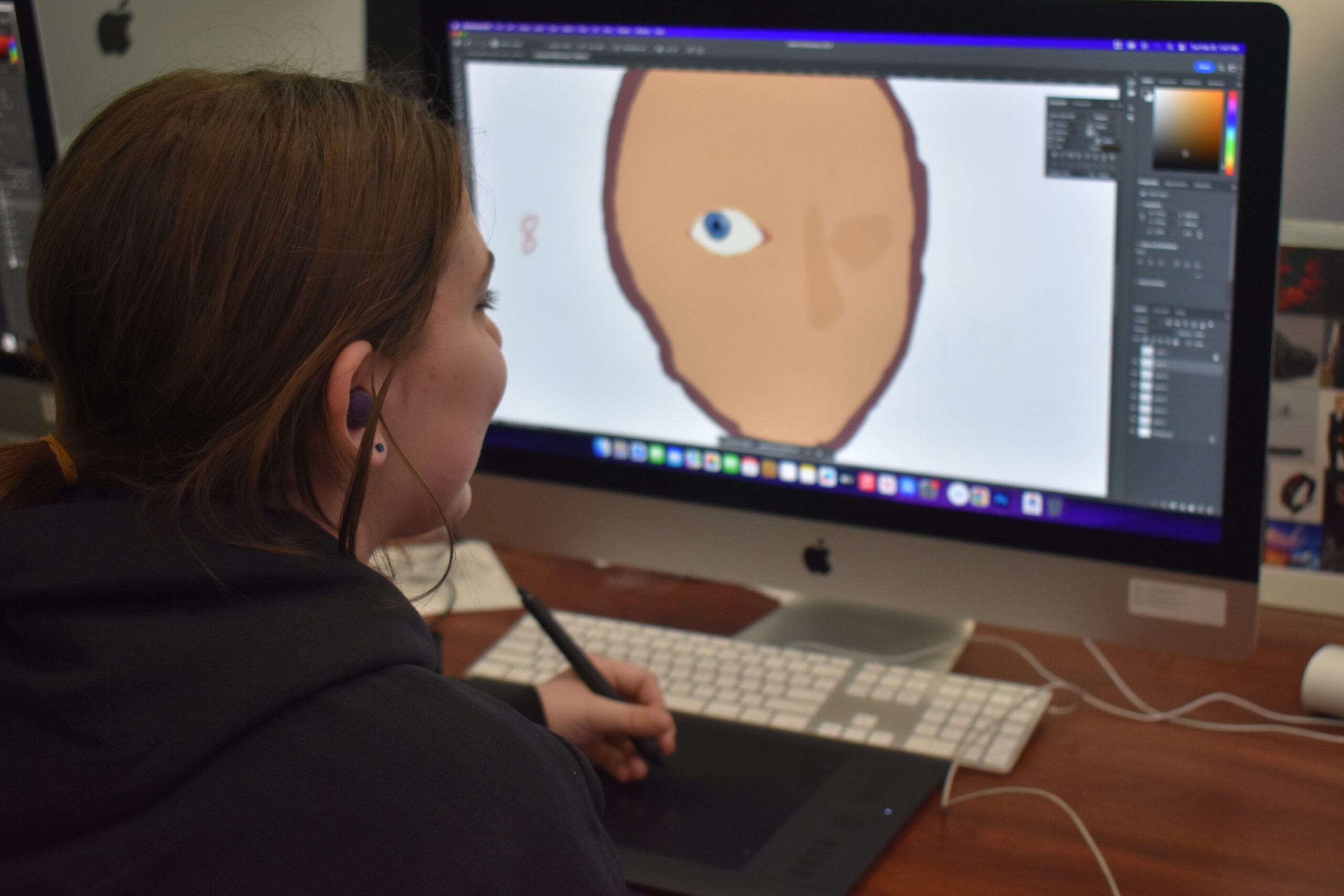
Junior Related 1 (MC)
Introduction to Digital Photography
This course provides a comprehensive introduction to the world of digital photography. Students will learn the fundamental principles of photography and how to use digital cameras to capture stunning images.
Key Topics:
- Camera Fundamentals:
- Understanding camera settings (aperture, shutter speed, ISO)
- Focus techniques (manual, autofocus)
- Composition and Design:
- Rule of thirds
- Leading lines
- Framing and perspective
- Color theory and its application in photography
- Digital Photography Techniques:
- Different types of photography (portrait, landscape, street, etc.)
- Lighting techniques (natural and artificial light)
- Camera angles and perspectives
- Photo Editing and Post-Processing:
- Adobe Photoshop basics
- Cropping, resizing, and color correction
- Retouching and enhancing images
- Creating digital composites and special effects
By the end of this course, students will be able to:
- Use a digital camera effectively to capture high-quality images.
- Apply the principles of composition and design to create visually appealing photographs.
- Edit and manipulate images using Adobe Photoshop.
- Understand the different genres of photography and their techniques.
- Critically analyze their own work and the work of others.
This course will provide a strong foundation in digital photography, enabling students to pursue further studies or careers in photography, graphic design, or other creative fields.
Junior Related 1 (A&D)
Software I
This course offers a comprehensive exploration of the Adobe Creative Suite, equipping students with the skills and knowledge needed to excel in graphic design, web design, and digital illustration.
Key Areas of Focus:
- Adobe Photoshop:
- Image editing and manipulation
- Digital painting and illustration
- Photo retouching and restoration
- Layer-based editing and masking
- Color correction and grading
- Adobe Illustrator:
- Vector graphics creation
- Logo design and branding
- Illustration and iconography
- Pattern design and texture creation
- Adobe InDesign:
- Page layout and design
- Print design (brochures, flyers, posters)
- Digital publishing (e-books, magazines)
- Interactive PDF creation
Core Skills:
- Color Theory: Understanding color psychology and color schemes.
- Typography: Applying typography principles to create effective visual communication.
- Composition: Creating visually appealing layouts and compositions.
- Problem-Solving: Identifying and resolving design challenges.
- Creativity and Innovation: Generating original and creative ideas.
By the end of the course, students will be able to:
- Use Adobe Creative Suite software proficiently.
- Create professional-quality designs for print and digital media.
- Apply design principles to solve real-world problems.
- Collaborate effectively with other designers.
- Adapt to industry trends and emerging technologies.
This course will prepare students for careers in graphic design, web design, advertising, and other creative fields.
Junior Related 2 (MC)
Film Study
Junior Related 2 (A&D)
Principles & Concepts of Design
This course provides a comprehensive introduction to the art of film. Students will explore the history, theory, and practice of filmmaking, analyzing films from various genres and time periods.
Key Topics:
- Film Analysis: Analyzing films based on various elements, such as narrative structure, cinematography, sound design, and mise-en-scène.
- Film Genres: Exploring different film genres, including drama, comedy, horror, science fiction, and documentary.
- Film Theory: Understanding key film theories and critical approaches.
- Film Production: Learning the basics of film production, including pre-production, production, and post-production.
Skills and Knowledge:
- Critical Thinking and Analysis: Developing critical thinking skills to analyze films and identify key themes and messages.
- Visual Literacy: Interpreting visual language and understanding the impact of cinematic techniques.
- Film Appreciation: Developing a deeper appreciation for the art of filmmaking.
- Filmmaking Techniques: Learning about camera techniques, lighting, sound design, and editing.
By the end of this course, students will have a strong foundation in film studies and be able to analyze films critically, understand the technical aspects of filmmaking, and appreciate the art of storytelling through film.
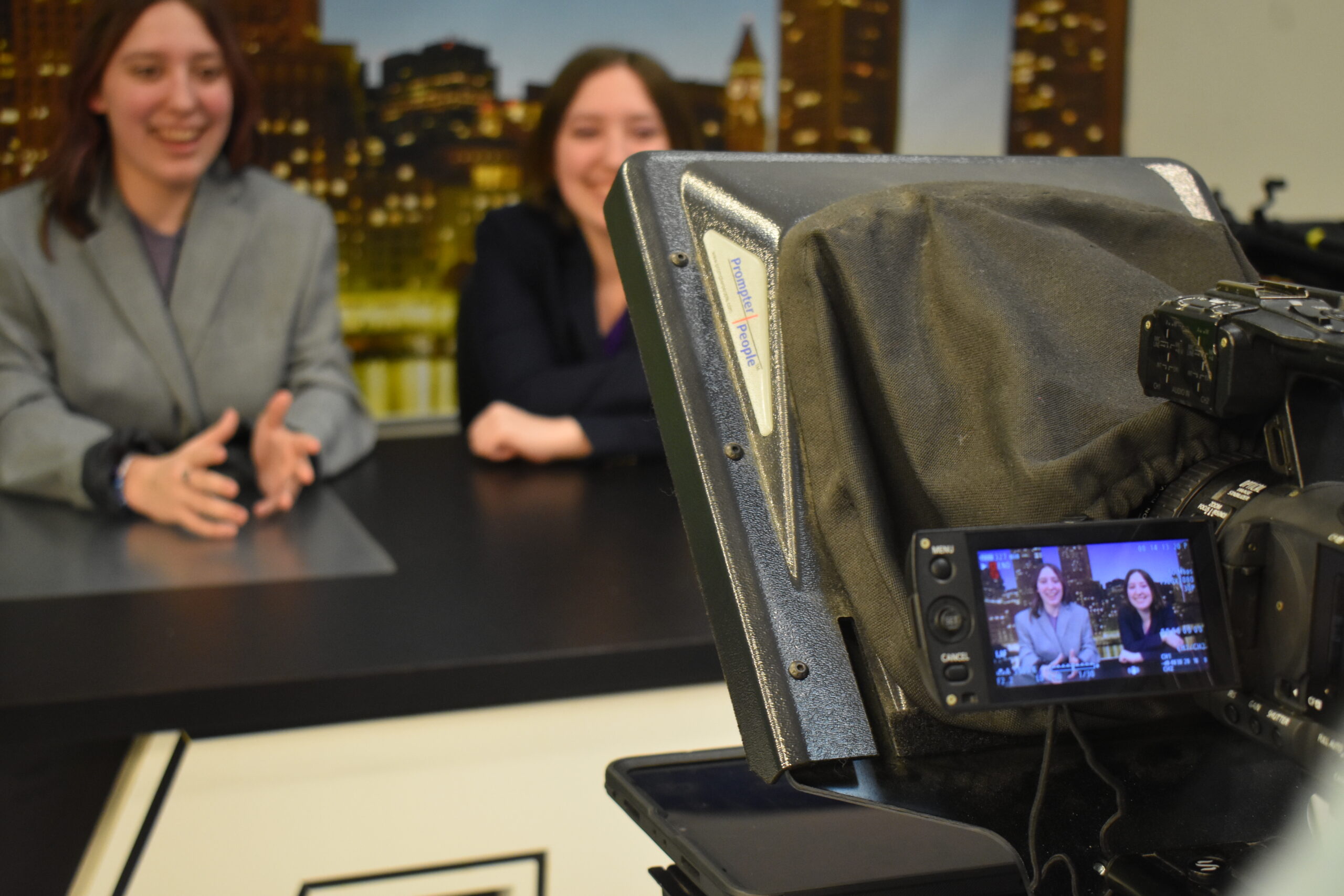
This course provides a comprehensive foundation in design principles and practices, focusing on the application of the Adobe Creative Suite.
Key Areas of Focus:
- Design Fundamentals:
- Elements of design (line, shape, color, texture, space)
- Principles of design (balance, contrast, emphasis, rhythm, proportion)
- Gestalt principles of perception
- Color Theory:
- Color psychology and color schemes
- Color palettes and harmonies
- Color usage in different design contexts
- Typography:
- Typefaces and font families
- Typography hierarchy and readability
- Kerning, leading, and tracking
- Layout and Composition:
- Grid systems and page layout
- Visual hierarchy and information architecture
- Creating effective compositions
- Visual Communication:
- Storytelling through visuals
- Creating engaging and impactful designs
- Understanding target audiences and messaging
Hands-on Projects:
- Logo Design: Creating unique and memorable logos.
- Print Design: Designing brochures, flyers, and posters.
- Web Design: Creating responsive websites using HTML, CSS, and JavaScript.
- Digital Illustration: Creating digital illustrations using software like Adobe Illustrator.
- Packaging Design: Designing packaging for products.
By the end of this course, students will be able to:
- Apply design principles to create visually appealing and effective designs.
- Use Adobe Creative Suite software proficiently.
- Develop a strong understanding of color theory, typography, and layout.
- Create designs that are both aesthetically pleasing and functionally effective.
- Collaborate with others to achieve design goals.
- Critically evaluate their own work and the work of others.
This course will prepare students for a variety of careers in design, including graphic design, web design, user experience design, and more.
Senior Program (MC)
This senior-level course provides a comprehensive overview of user experience (UX) design, user interface (UI) design, and broadcast news. Students will develop a strong foundation in these fields, preparing them for future careers in digital media and communication.
Key Areas of Focus:
UX/UI Design:
- User-Centered Design: Understanding user needs, behaviors, and motivations.
- Information Architecture: Organizing and structuring information for optimal user experience.
- Wireframing and Prototyping: Creating low-fidelity and high-fidelity prototypes.
- User Interface Design: Designing visually appealing and functional user interfaces.
- Web Development: HTML, CSS, and JavaScript for building interactive websites.
- Usability Testing: Conducting user tests to evaluate the effectiveness of designs.
Broadcast News:
- News Writing and Reporting: Writing clear, concise, and accurate news stories.
- Video Production: Using video cameras and editing software to create news segments.
- Audio Production: Recording and editing audio for news segments.
- Journalistic Ethics: Adhering to ethical standards in journalism.
Collaborative Projects:
- Website Design: Designing and developing websites for various clients.
- Video Production: Producing news segments, documentaries, and promotional videos.
By the end of this course, students will be able to:
- Design and develop user-friendly websites.
- Produce high-quality video content for broadcast and online platforms.
- Write compelling news stories and scripts.
- Collaborate with team members to achieve project goals.
- Adhere to ethical standards in media production.
This course provides a valuable opportunity for students to develop a strong portfolio of work, showcasing their skills and creativity.
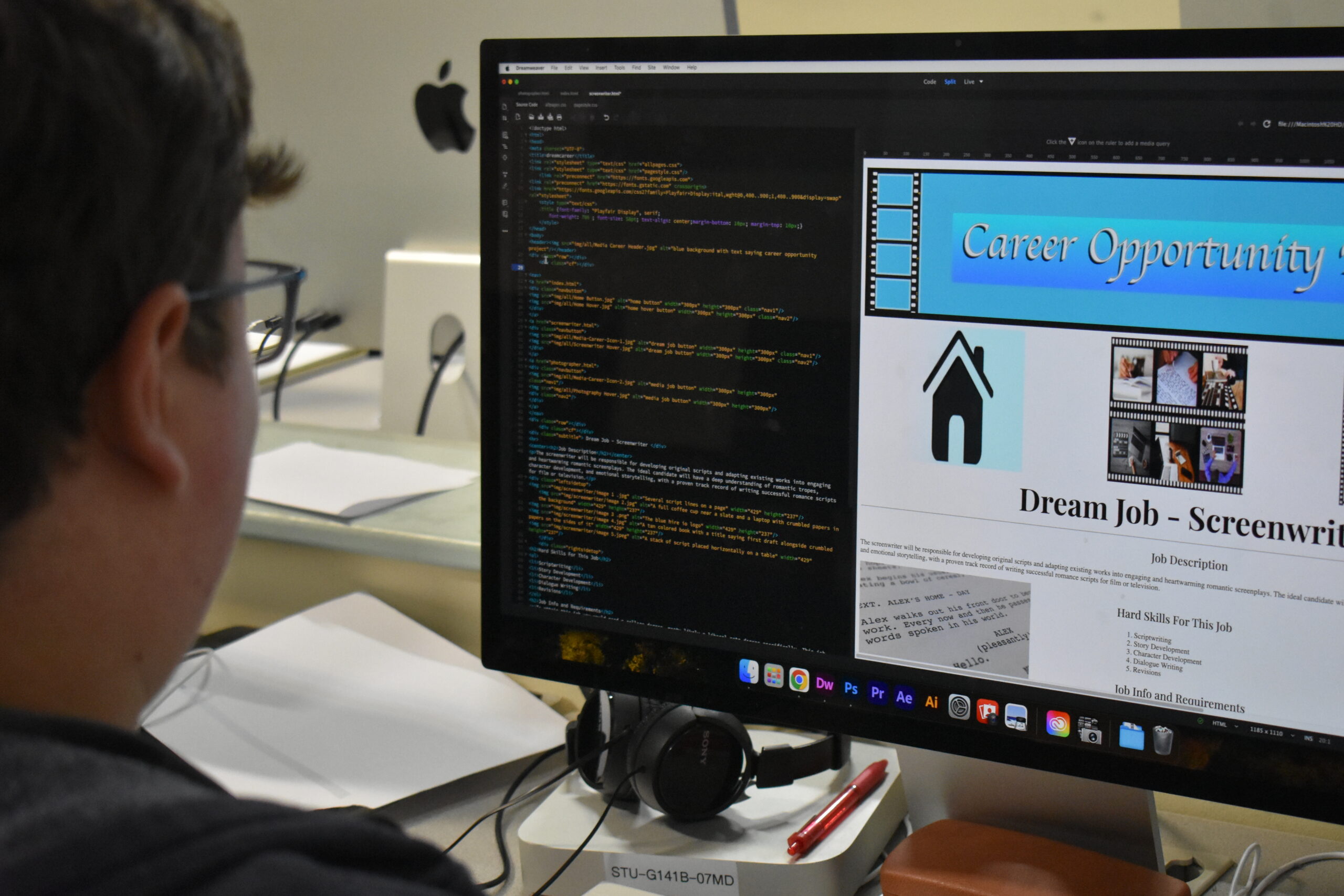
Senior Program (A&D)
The Senior Year of the Design and Visual Communication program is designed to refine students’ skills and prepare them for professional careers. Key areas of focus include:
Advanced Studio Practice:
- Drawing and Sketching: Refining drawing skills, including figure drawing, perspective drawing, and concept sketching.
- Painting and Mixed Media: Experimenting with various painting techniques and mediums.
- Digital Art: Mastering advanced digital art techniques using software like Adobe Photoshop and Illustrator.
- 3D Design: Exploring 3D modeling and design software (e.g., Blender, 3ds Max).
Portfolio Development:
- Curating a Strong Portfolio: Selecting and organizing work that showcases skills and strengths.
- Professional Presentation: Developing effective presentation skills for portfolio reviews and job interviews.
- Online Portfolio: Creating a professional online portfolio to showcase work to potential employers.
Career Preparation:
- Job Search Strategies: Learning job search techniques, including resume and cover letter writing.
- Networking: Building relationships with industry professionals.
- Entrepreneurship: Exploring entrepreneurial opportunities in the creative industry.
Specific Projects:
- Personal Branding: Developing a personal brand and creating a branding package.
- Client Projects: Working on real-world design projects for clients.
- Fine Art Projects: Creating original artwork for exhibitions and competitions.
- Digital Design Projects: Designing websites, mobile apps, and interactive experiences.
By the end of the senior year, students will have a strong portfolio of work, a solid understanding of design principles, and the skills and knowledge to succeed in the creative industry. They will be well-prepared for further education or employment in fields such as graphic design, web design, animation, illustration, and photography.
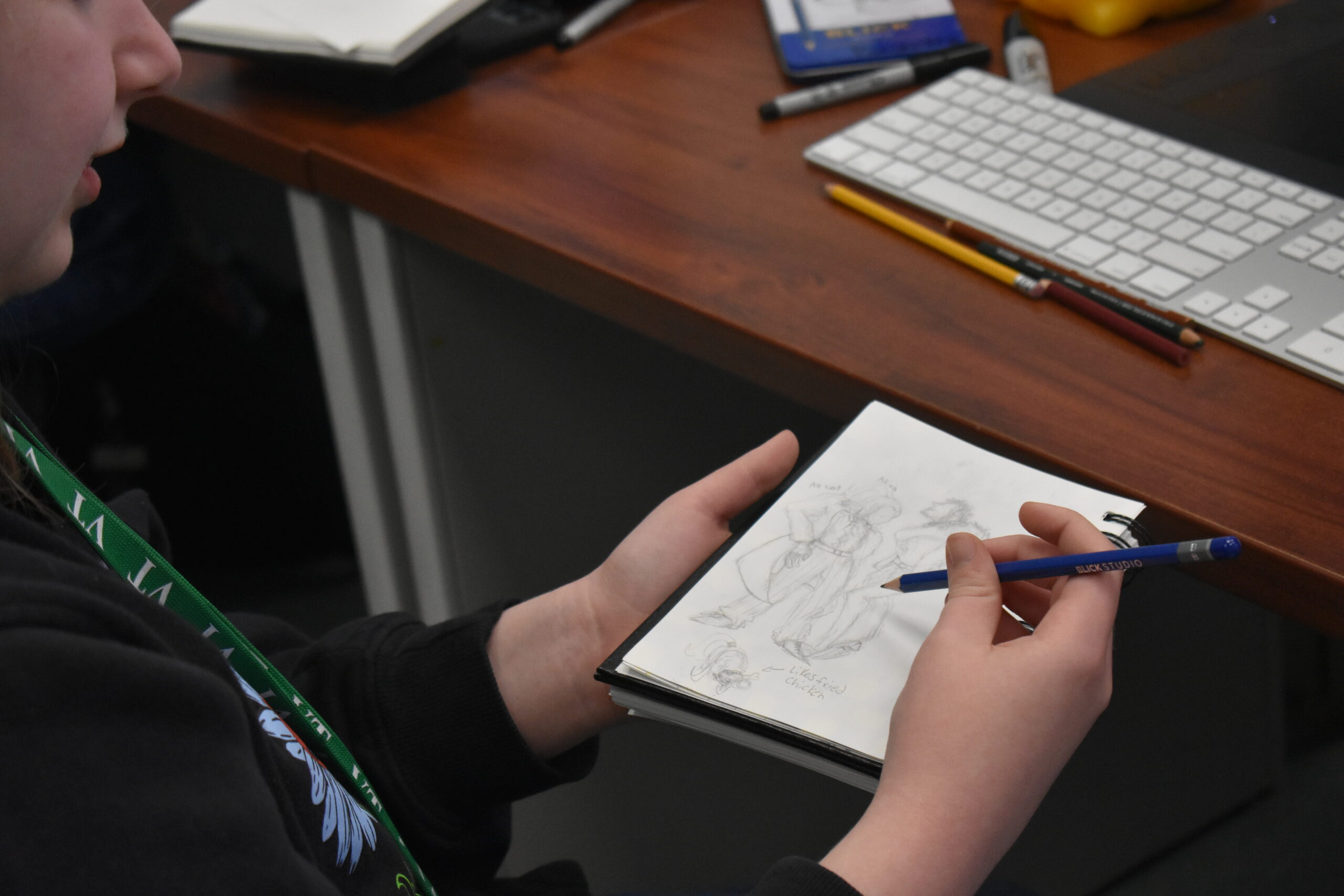
Senior Related 1 (MC)
Media Writing II
This course builds upon the foundational knowledge gained in Media Writing I, focusing on technical writing for the media industry.
Key Topics:
- Technical Writing:
- Writing clear and concise technical documentation
- Creating user manuals, instructional guides, and reports
- Understanding technical writing standards and style guides
- Pre-Production Planning:
- Developing detailed pre-production plans
- Creating shot lists and storyboards
- Writing interview questions and conducting interviews
Project-Based Learning:
- Multimedia Projects: Writing scripts and creating storyboards for multimedia projects, such as short films, documentaries, and animations.
- Technical Writing Assignments: Writing technical documentation for software, hardware, or other technical products.
- Portfolio Development: Creating a professional portfolio showcasing writing and technical skills.
By the end of this course, students will be able to:
- Develop effective pre-production plans.
- Edit and refine written work.
- Create clear and concise technical documentation.
- Build a strong portfolio of writing samples.
This course will prepare students for careers in media production, technical writing, and other related fields.

Senior Related 1 (A&D)
Visual Design & Software II
The Senior Visual Design & Software program offers a comprehensive curriculum that prepares students for advanced roles in the creative industry. Key areas of focus include:
Advanced Design Skills:
- Graphic Design:
- Branding and identity design
- Print design (brochures, posters, packaging)
- Digital design (web graphics, social media graphics)
- Illustration:
- Digital illustration techniques
- Concept art and character design
- Storyboarding and animation
- Photography:
- Advanced photography techniques (lighting, composition, exposure)
- Digital photography editing and retouching
- Photojournalism and documentary photography
Software Proficiency:
- Adobe Creative Suite: In-depth knowledge of Adobe Photoshop, Illustrator, InDesign, and other relevant software.
- 3D Modeling and Animation: Experience with 3D software (e.g., Blender, Cinema 4D)
- Web Design and Development: HTML, CSS, and JavaScript for creating interactive websites.
Professional Development:
- Portfolio Development: Creating a strong professional portfolio to showcase skills and experience.
- Industry Standards and Best Practices: Adhering to industry standards and ethical guidelines.
- Client Communication and Project Management: Effectively communicating with clients and managing projects.
- Job Search and Career Preparation: Developing job search strategies and preparing for interviews.
By the end of the program, students will be able to:
- Create high-quality visual designs for various media.
- Use industry-standard software proficiently.
- Solve complex design problems creatively.
- Collaborate effectively with other designers and clients.
- Adapt to industry trends and emerging technologies.
This program prepares students for a variety of careers in the creative industry, including graphic design, web design, animation, photography, and game design.
Senior Related 2 (MC)
Advanced Digital Photography – Elective
Senior Related 2 (A&D)
Career Visual Design Studio – Elective
This advanced course is designed to further develop students’ skills in digital photography and image editing. Students will explore advanced techniques and concepts, such as:
- Advanced Camera Techniques:
- Using different lighting techniques (natural and artificial)
- Experimenting with creative camera angles and perspectives
- Advanced Photo Editing:
- Advanced Photoshop techniques (layers, masks, blending modes)
- Color correction and grading
- Retouching and restoration
- Creating digital composites and manipulations
- Photography Genres:
- Portrait photography
- Landscape photography
- Street photography
- Fine art photography
- Photojournalism
- Photography History and Theory:
- Studying the history of photography and influential photographers
- Understanding the role of photography in society and culture
- Analyzing the elements of design and composition in photography
Through hands-on projects and critiques, students will develop a strong portfolio of their work. They will also learn to critically evaluate their own work and the work of others, providing constructive feedback and refining their skills. This course will prepare students for further education in photography or a career in the creative industries.

The Career Visual Design Studio Elective program offers a unique opportunity for students to delve deeper into their specific interests within the field of design and visual communication. This advanced program focuses on honing technical skills, developing creative problem-solving abilities, and preparing students for professional careers in the creative industry.
Key Areas of Focus:
- Advanced Design Techniques:
- Exploring advanced techniques in digital illustration, graphic design, and photography.
- Experimenting with various software and tools.
- Developing a unique artistic style.
- Professional Development:
- Building a strong professional portfolio.
- Networking with industry professionals.
- Understanding industry standards and best practices.
- Developing strong communication and presentation skills.
- Entrepreneurship and Business Skills:
- Creating a personal brand and marketing strategy.
- Understanding copyright and licensing laws.
- Managing finances and budgeting for creative projects.
- Building a client base and managing projects.
Specific Projects:
- Personal Projects: Pursuing individual creative projects based on personal interests.
- Client Projects: Collaborating with clients to create designs for specific needs.
- Exhibitions and Competitions: Participating in exhibitions and competitions to showcase work.
- Portfolio Development: Curating a strong portfolio to showcase skills and experience.
By the end of the program, students will have a strong understanding of design principles, technical skills, and professional practices. They will be well-prepared to pursue careers in various creative fields, such as graphic design, web design, animation, photography, and illustration.
Certifications
Multimedia Communications
- OSHA 10
- Adobe Certified Professional
Advertising & Design
- OSHA 10
- Adobe Certified Professional
Career Opportunities
Multimedia Communications
- Director
- Camera Operator
- Editor
- Audio Technician
- Broadcast Technician
- Announcer
- On-Air Talent
- Teacher
- Academic Teacher
- Desktop Publisher
- Journalist
- Photographer
- Comic Book Writer/Artist
- 2D Animator
- 3D Animator
- Character Modeler
- Environment Artist
- Texture Artist
- Game Developer
- Character Rigger
- Web Designer
- Commercial & Industrial Designer
- Graphic Design
- Production Artist
- Photographer
- Type Designer
- Brand Identity Designer
- Packaging Designer
- Advertising Designer
- Interactive Marketing and Advertising Designer
- Corporate Communications Designer
- Marketing/Social Media Designer
- Entrepreneurship
- Motion Designer
- Video Producer
- Mobile Designer
- Desktop Publisher
- Digital Marketing Strategist
Advertising & Design
- Creative Director
- Art Director
- Graphic Designer
- Freelance Artist
- Comic Book Writer/Artist
- Web Designer
- Commercial & Industrial Designer
- Production Artist
- Photographer
- Type Designer
- Brand Identity Designer
- Packaging Designer
- Advertising Designer
- Interactive Marketing and Advertising Designer
- Marketing/Social Media Designer
- Entrepreneurship
- Fine Artist
- Illustrator
- Art Educator
Post-Secondary Education
Multimedia Communications
Upon completion of this Technical Program, students will be better prepared for post-secondary education either an associates or bachelors in then following courses of study:
- Photography
- Animation
- Web Design
- Art & Communication Education
- Marketing/Advertising
- Social Media Marketing
- Illustration
Advertising & Design
Upon completion of this Technical Program, students will be better prepared for post-secondary education either an associates or bachelors in then following courses of study:
- Photography
- Graphic Design
- Animation
- Web Design
- Fine Art
- Art Education
- Marketing/Advertising
- Social Media Marketing
- Illustration


